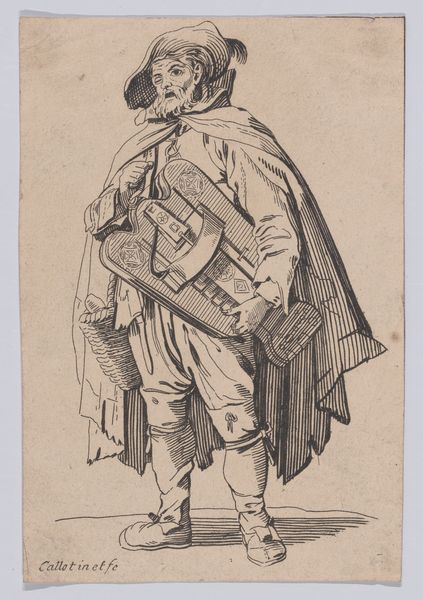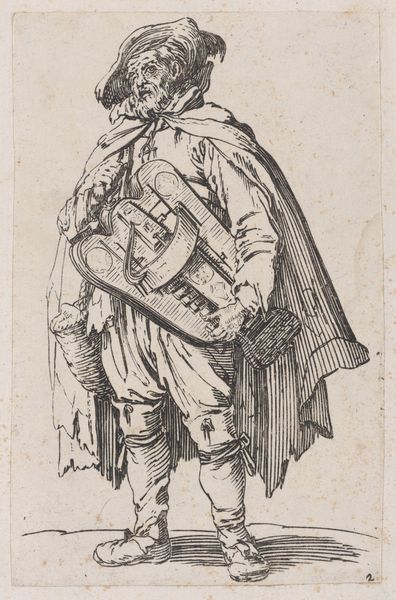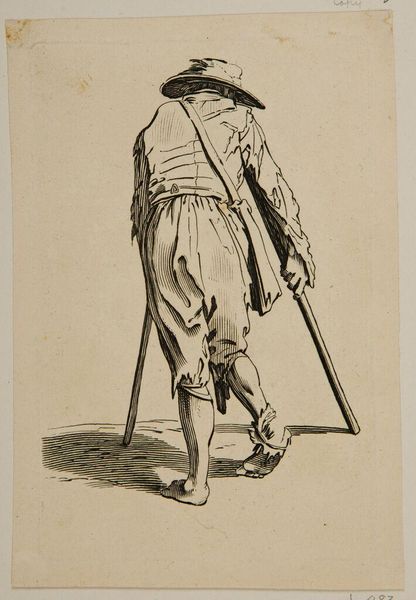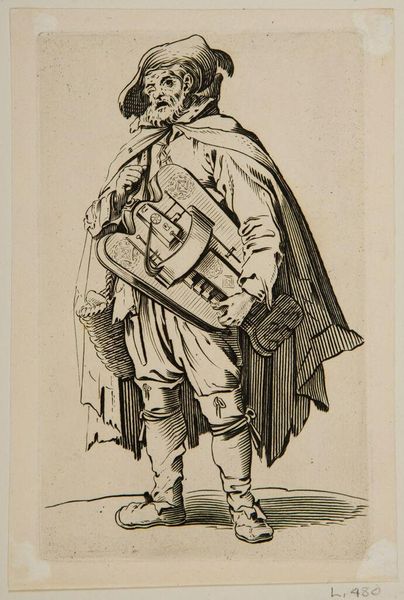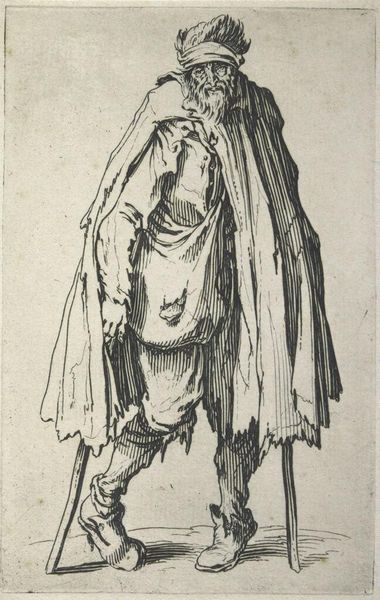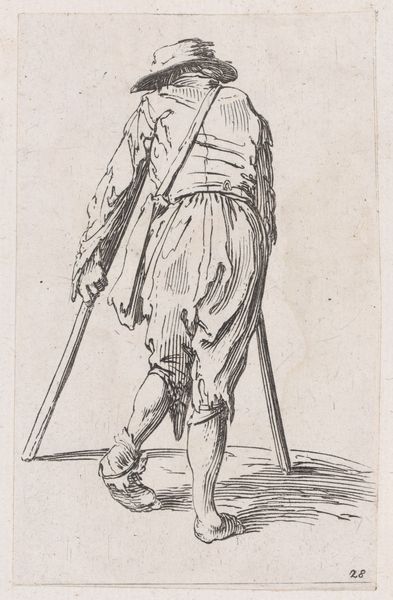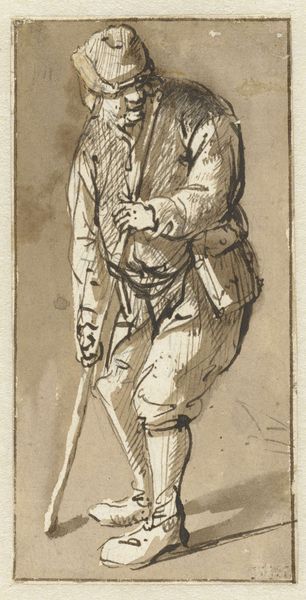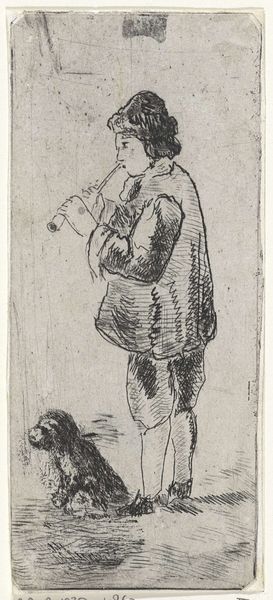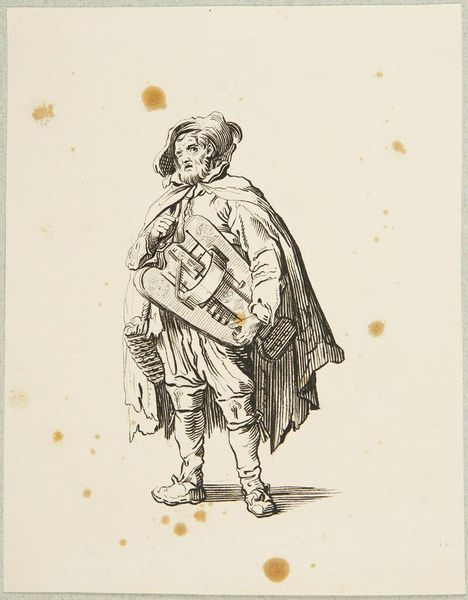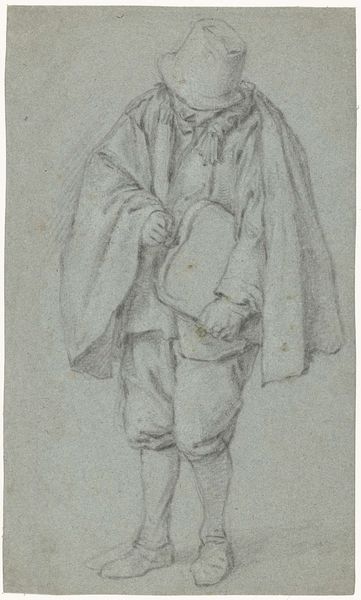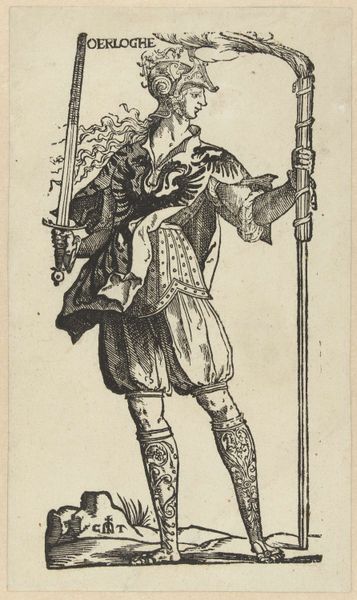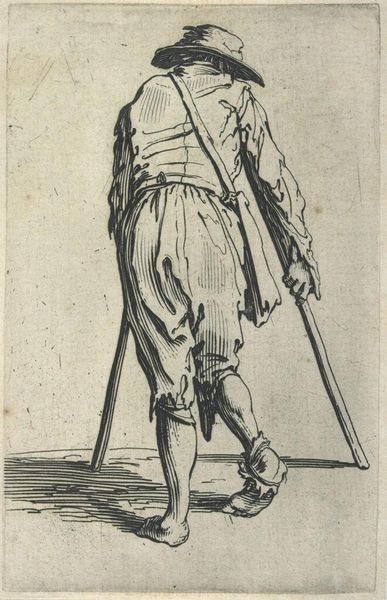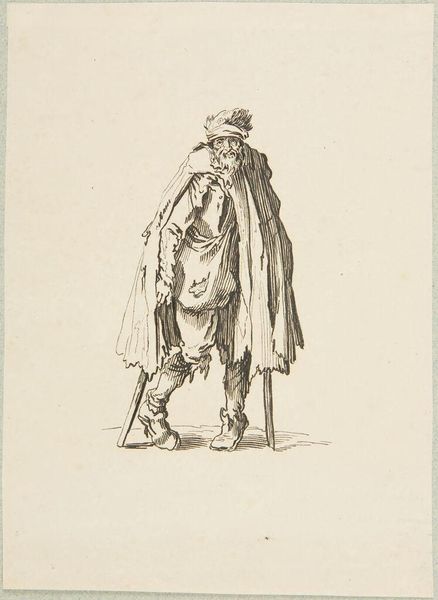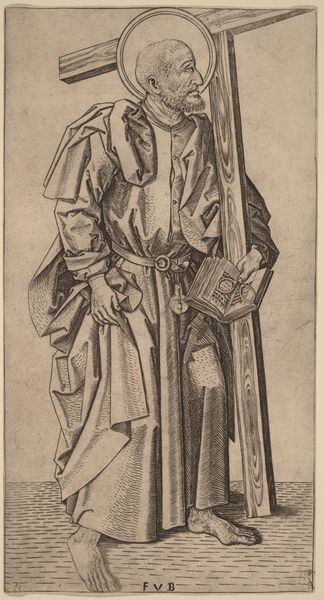
Copyright: CC0 1.0
Editor: Here we have Jacques Callot's "Hurdy-Gurdy Player," from about 1620. The figure's lined face and tattered clothing are rendered with such detail, it's almost startling. What do you make of Callot's technical skill in this piece? Curator: The etching's success lies in its intricate network of lines. Observe how Callot uses hatching and cross-hatching to create tonal variations, which describe form and texture. The density of lines suggests a keen understanding of light and shadow, no? Editor: Absolutely, the detail on the instrument is remarkable! Did he use a specific technique to achieve this level of precision? Curator: Callot was a master of etching. He refined the échoppe technique, using a needle with an oval section to create swelling and tapering lines. Notice how this lends a calligraphic quality to the print, adding depth and dynamism. Editor: It's fascinating how much detail he achieves with line alone. I'll definitely look more closely at the line work of other etchings now. Curator: Indeed. Close formal analysis reveals the artist's command of the medium, allowing us to appreciate the work on a deeper level.
Comments
No comments
Be the first to comment and join the conversation on the ultimate creative platform.
